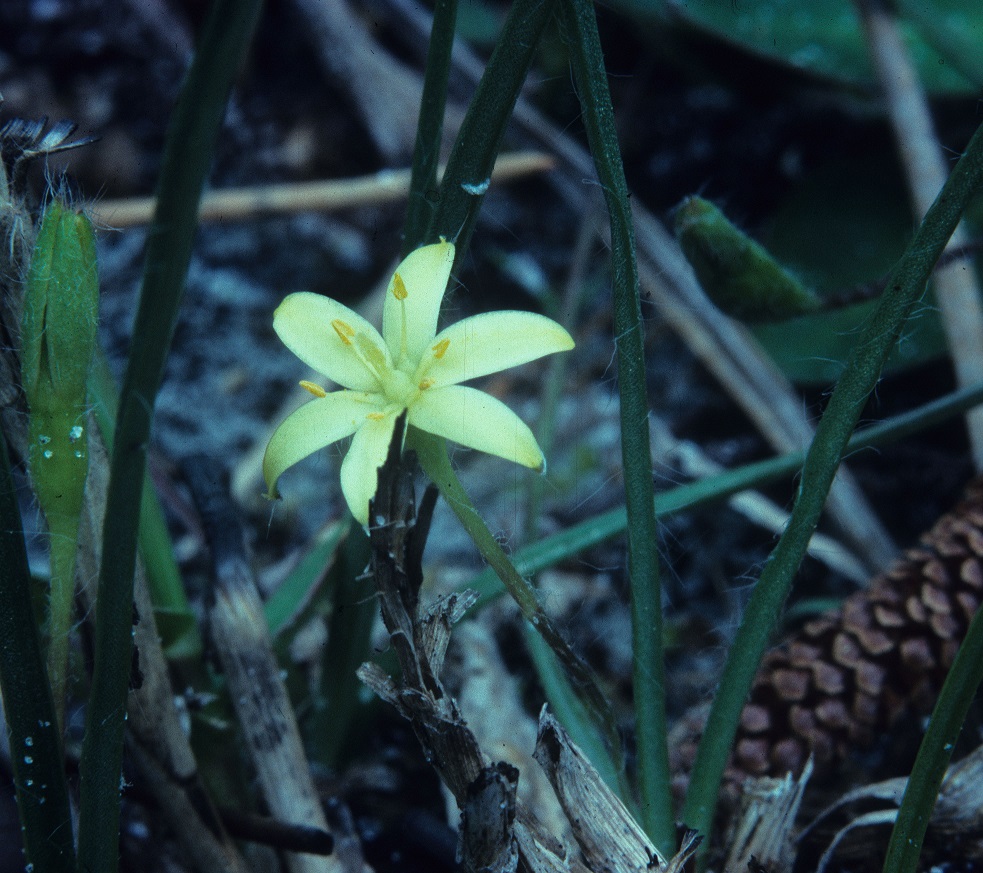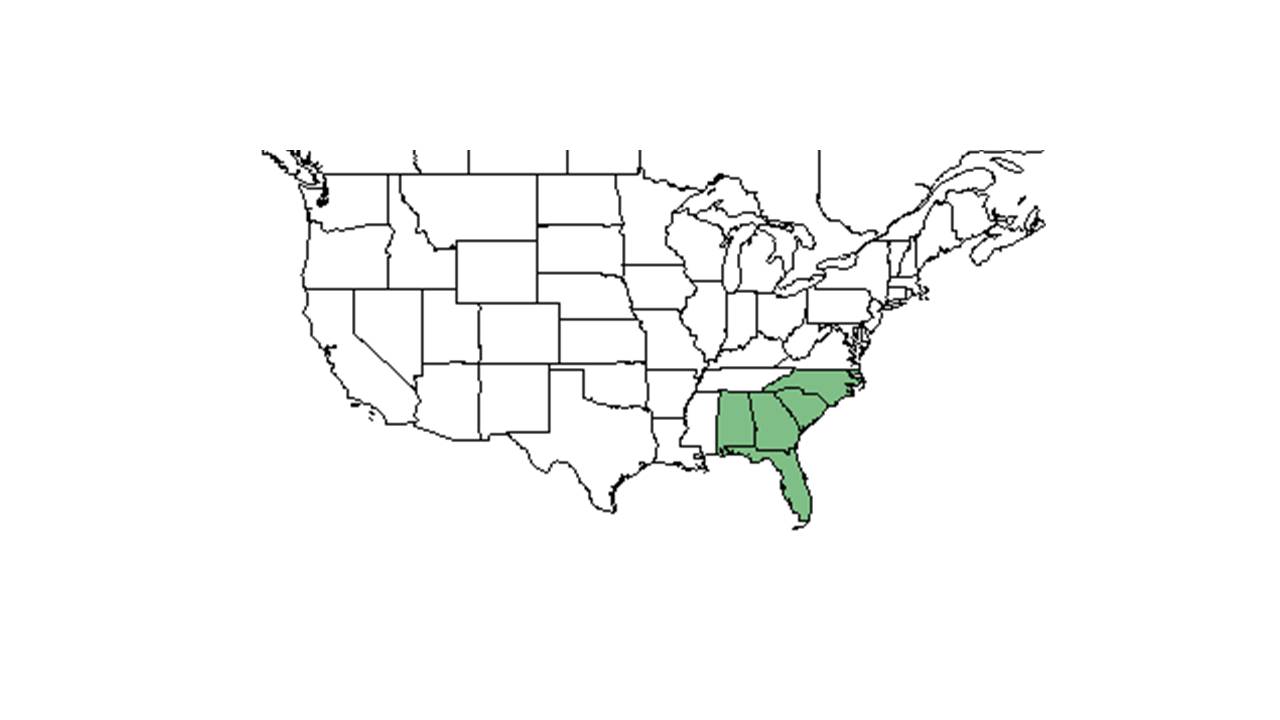Hypoxis juncea
| Hypoxis juncea | |
|---|---|

| |
| Photo taken by Gil Nelson | |
| Scientific classification | |
| Kingdom: | Plantae |
| Division: | Magnoliophyta - Flowering plants |
| Class: | Liliopsida – Monocotyledons |
| Order: | Liliales |
| Family: | Liliaceae |
| Genus: | Hypoxis |
| Species: | H. juncea |
| Binomial name | |
| Hypoxis juncea Sm. | |

| |
| Natural range of Hypoxis juncea from USDA NRCS Plants Database. | |
Contents
Description
Common Name: fringed yellow star-grass
Hypoxis juncea is a perennial herbaceous species.
Distribution
Ecology
Habitat
It is a dry flatwoods/ sandhill species.[1]
Phenology
Seed dispersal
Seed bank and germination
Fire ecology
H. juncea appeared to have benefited from high fire frequencies in a study in 2003.[1] Observed H. juncea respouting at least 10 days after a fire that occurred in June of 1993.[2]
Pollination
Mark Deyrup at Archbold Biological Station observed these Hymenoptera species on Hypoxis juncea
Halictidae: Augochlorella gratiosa
Halictidae: Lasioglossum nymphalis
Use by animals
Deyrup observed this bee, Dialictus nymnphalis, on H. juncea.[3] “…Hypoxis is one of the most important plants for quail, which occurred (resprouted) in the ranking only the first 1 or 2 months after fire.[4]
Diseases and parasites
Conservation and Management
Cultivation and restoration
Photo Gallery
References and notes
Florida State University Robert K. Godfrey Herbarium database. URL: http://herbarium.bio.fsu.edu. Last accessed: June 2014.
Collectors: Loran C. Anderson, Karen MacClendon, R. Komarek, and Annie Schmidt.
States and Counties: Florida: Calhoun, Jefferson, Liberty, and Wakulla. Georgia: Thomas.
- ↑ 1.0 1.1 Glitzenstein, J. S., D. R. Streng, et al. (2003). "Fire frequency effects on longleaf pine (Pinus palustris, P.Miller) vegetation in South Carolina and northeast Florida, USA." Natural Areas Journal 23: 22-37.
- ↑ Pavon, M. L. (1995). Diversity and response of ground cover arthropod communities to different seasonal burns in longleaf pine forests. Tallahassee, Florida A&M University.
- ↑ Deyrup, M. J. E., and Beth Norden (2002). "The diversity and floral hosts of bees at the Archbold Biological Station, Florida (Hymenoptera: Apoidea)." Insecta mundi 16(1-3).
- ↑ Hughes, R. H. (1975). The native vegetation in south Florida related to month of burning. Asheville, NC, USDA Forest Service.
